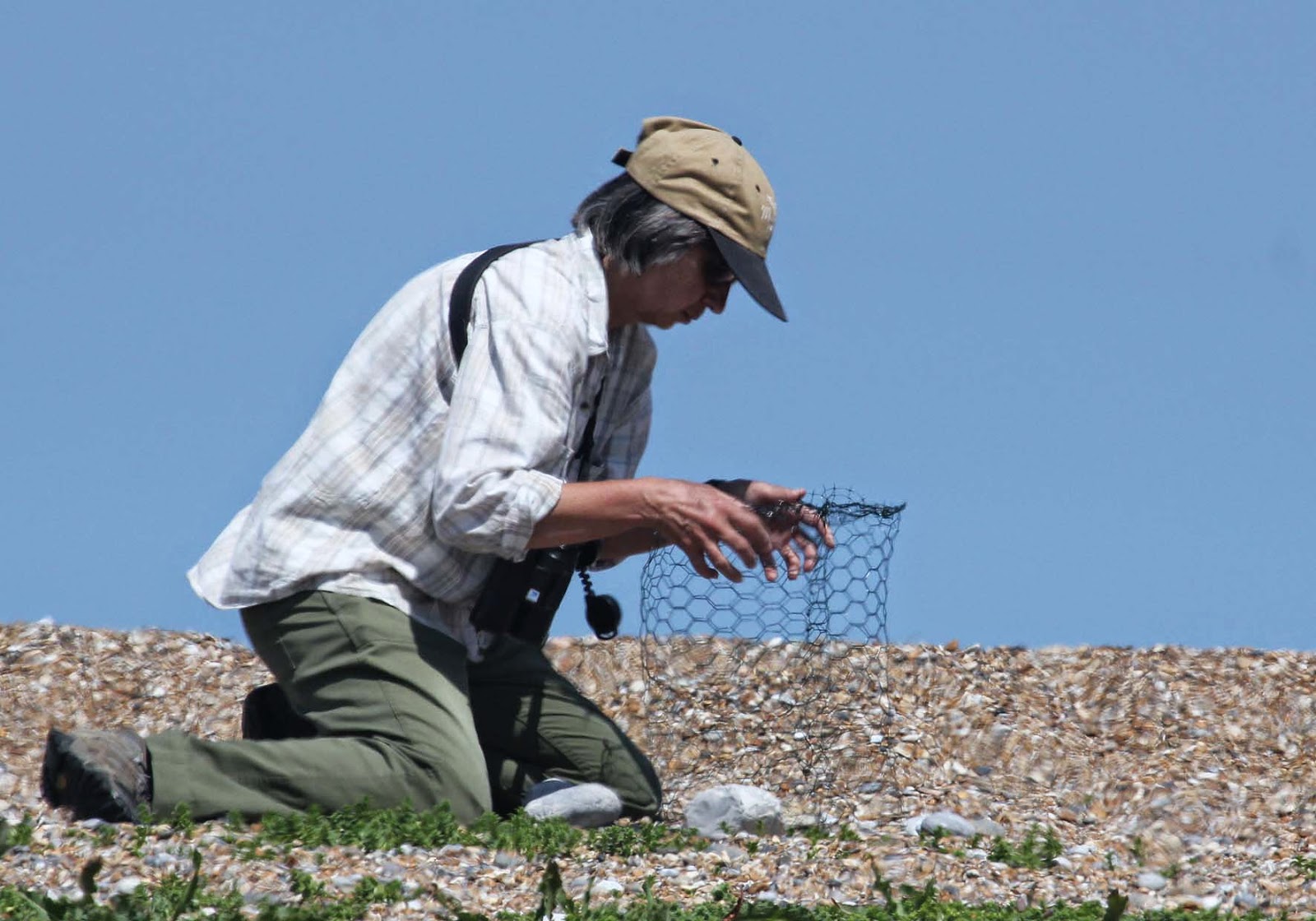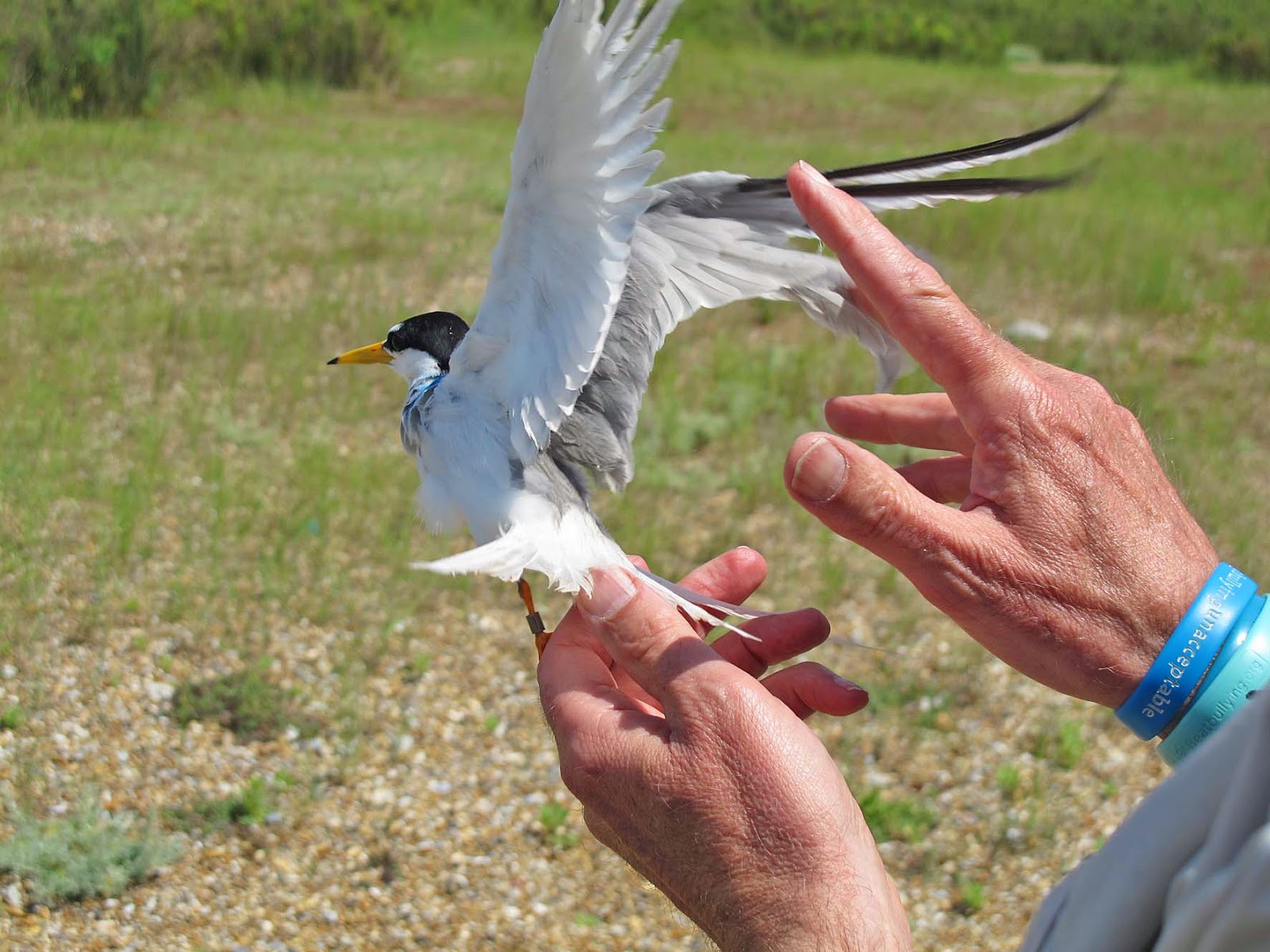A scrape cage consisting of wire mesh is placed over a bird's eggs. Upon return they enter through a small slit, but are unable to get back out.
The birds were fitted with a normal metal ring and also an individually marked colour-ring with a unique three-letter code: UB5, UB6, UB7 and UB8.
Wings are measured
Measuring head and bill length
Dye is added to identify ringed birds
Many observer hours now need to be put in to learn about these tiny sea birds.
Butterflies
On the wing now is the beautifully-marked Dark Green Fritillary butterfly, Norfolk's only fritillary. Look out for them in the dunes on warm days.
Moths
The Hornet moth is a member of the Clearwing family and is a superb mimic of the hornet. Sightings of this moth have been occurring in the Plantation for the last four years. Breeding was suspected, so on the 9th of June the rangers conducted a survey, which involves checking the bases of poplar trees for exit holes. a total of 12 were found, some with pupal cases protruding, along with a freshly-emerged adults.
Above: pupal case. Below: emerged moth.
A recent moth trap, on the 21st, produced a few nice species, including:
Pine Hawkmoth
.
.
Shark
.
.
Bright-line Brown-eye
.
.
Brown-line Bright-eye
.
.
Light Arches
.
.
Buff Arches
.
Dark Arches
.
Archer's Dart
To finish with, we are delighted to announce that all four of our tern species now have chicks...
Above: Common Tern; Below: Little Tern
Paul Nichols,Ranger
(Photography by Paul, Sarah, Ajay, except Little Tern ringing by Richard Porter)





















No comments:
Post a Comment